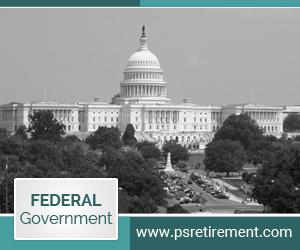How Is The Federal Government Going To Hire The New Generations

Policymakers and federal labor organizations both seemed to accept that to enhance the government’s ability to hire and keep employees, organizations need to do more to pay high-performance employees and provide flexibility in the office.
The House Oversight and Reform subcommittee on government operations had a hearing called NextGen Feds: Recruiting the Next Generation of Public Servants, looking for feedback on how the imminent and long-feared retirement surge could be handled. But with no surprise, there had been a debate about the best method to bring about change, with Republicans proposing a comprehensive restructuring of the General Schedule framework in pursuit of production-based compensation, and federal employee unions and Liberals supporting greater effective use of current services— and educating administrators to use them the best possible way.
A researcher for the Heritage Foundation, Rachel Grezler, stated that with ninety-nine percent of workers getting pay raises, the focus should be put only on providing a raise based on the performance of each individual. She also mentioned that the money saved from not giving everyone a raise could then be used to increase the salary jobs that are in high-demand, along with special and signing bonuses.
Yet Tony Reardon, president of the National Treasury Employees Union, said the current pay structure has opportunities, but a significant reduction in financing supervisor training and education has left administrators without any of the skills needed to implement them. He provided an example from the IRS, where during the Obama administration, the training spending was cut by 85 percent within one year.
He mentioned that up until about 2014, 14 percent of bargaining unit workers ended up getting a quality step raise rather than a regular step raise. “You became a Step 10, or whatever, instead of being a Grade 12 Step 9, you got an additional step.” He said that the only way that an employee receives the step is if the agency decides that they are a high performer and that they earned it. He believes that the estimates now are about 3 to 4 percent and that they are not using the resources available to them.
Greszler also proposed that the government should consider allowing new employees to elect to move pension contributions to their direct pay or their TSP accounts, especially since millennials tend to prefer staying flexible in a career through the years. Chairman of the subcommittee, Gerry Connolly, D-Va., was able to consider the possibility.
The Chairman mentioned that it was a fair assessment that the system could be more flexible, but also stated that it would be a good idea to save for retirement early as retirement ends up appearing far quicker than most would think.
Another approach to attracting younger workers into the federal sector is to enhance the non-salary compensation plan, especially in high-demand areas such as information systems and cybersecurity. Rep. Carolyn Maloney, D-N.Y., sought ongoing encouragement for her proposal, which would give any personnel, either gender, with 12 weeks of fully paid leave for the arrival or adoption of a child, as also to assist with the care of ill family members or personal health issues. The provision was part of the House version of the fiscal 2020 National Defense Authorization Act and is one of the conference committee’s main criteria for negotiation.
Maloney said that the laborforce at the federal level is getting old, and the economy is progressively different. She also said that women are primarily employed because they have to be, since sustaining a family generally requires multiple earnings. Looking further in a general spectrum, in 40 percent of citizens with kids under the age of 18, women are the sole or principal providers, and two-thirds of households rely on the income of these working mothers. She also states that the federal labor force needs to be in a position to serve the needs of citizens of today and in the future much better.
Greszler said the Heritage Foundation is advocating the development of paid family leave at agencies but proposed that it must be compensated by removing other kinds of sick leave that federal employees currently have.
Robert Goldenkoff, director of strategic issues at the Government Accountability Office, said departments would have to do a superior job of telework integration, which is becoming progressively a key advantage that job candidates are seeking for in a career.
He said that even though organizations in some fields of work can be struggling to offer higher wages, they can utilize telework and other extensive work-life balance services to meet the demands of employees for versatility in jobs.
Despite repeated proclamations from the Personnel Management Office that telework not just boosts employee morale but also increases productivity. However, some agencies under the Trump administration have significantly reversed the procedure, notably in the departments of Education, Interior, and Agriculture.
Representative John Sarbanes, D-MD stated that statistics show that telework that used aggressively and sustainably creates some of the most efficient areas to work. When the culture of productivity is widely practiced, usually caused by telework, it actually inspires the rest of the labor force, whether they are using telework or not.





